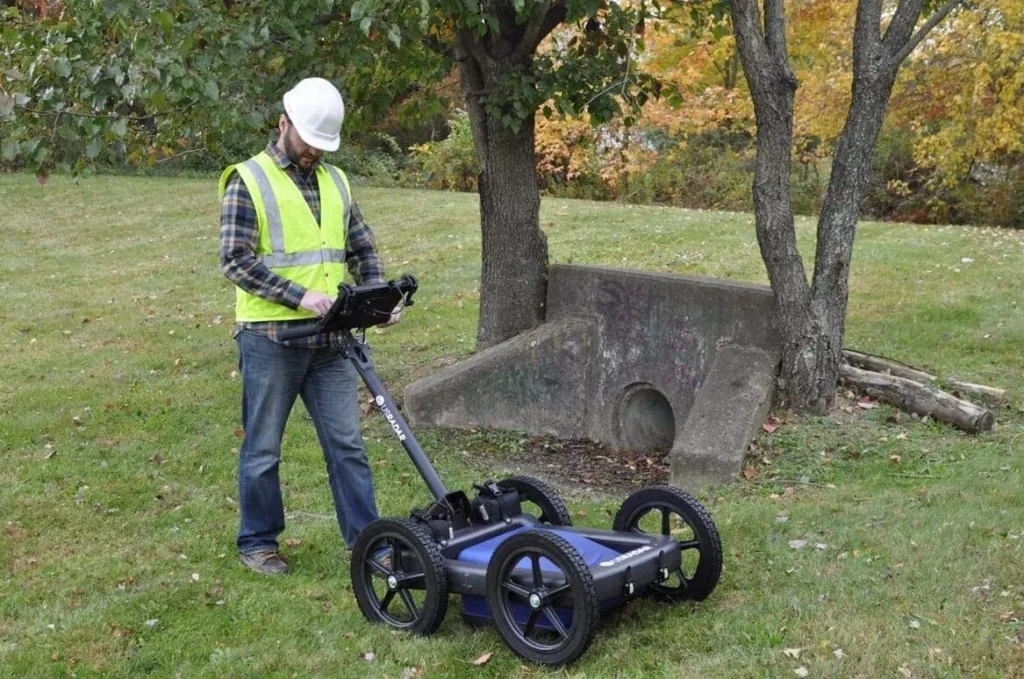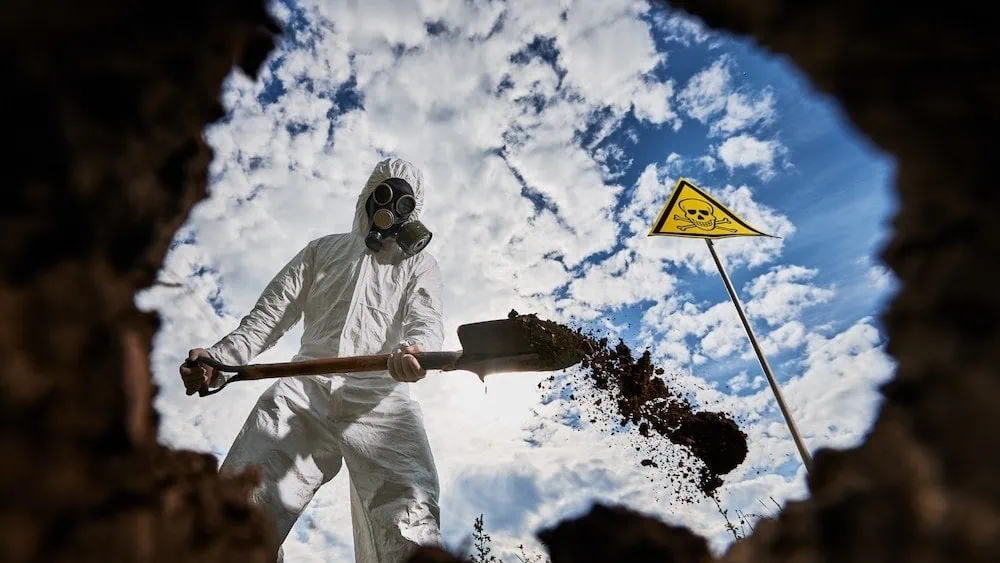For construction planning, knowing the precise location of underground utilities and other obstructions is crucial to a project’s success. It has a major impact on whether a project goes smoothly or results in costly — potentially even deadly — accidents or setbacks.
Modern construction projects are complex, and with underground infrastructure growing significantly every year, things aren’t getting easier. It wasn’t that long ago that the only way to successfully plan construction was to engage in costly excavations. And of course, excavation poses many safety risks that can put construction teams in harm’s way.
Fortunately, locating underground objects needn’t be destructive, dangerous or expensive with ground-penetrating radar.
A Refresher on Ground-Penetrating Radar
![]()
Ground-penetrating radar, referred to as GPR, is a technology used for surveying and data collection of subsurface objects. It’s highly accurate and versatile and used for locating and mapping a wide variety of objects in nearly any kind of ground material. Aside from its excellent application in construction, it’s also used for:
- Environmental geophysics
- Archaeology
- Forensics
- Search-and-rescue operations following avalanches or structural collapses
GPR works by measuring the conductivity of subsurface materials via a two-way antenna. These measurements are analyzed by a computer to determine the precise location and size of underground objects and are displayed to the surveyor in real time.
This technology is one of the best advances in underground object location and mapping in recent years. It provides a non-destructive approach for locating just about any type of object, regardless of material, and it works in just about any type of environment.
9 Benefits of GPR for Construction Projects
![]()
Despite its accuracy, versatility and reliability, it’s difficult to understand GPR’s capabilities by technical specifications alone. As such, many people still rely on outdated schematics or incomplete maps for construction project planning.
To understand how GPR can save time, money and headaches for those in construction, here are nine clear benefits the technology brings to every project.
1. A Great Starting Point
![]()
Ground-penetrating radar is a great tool to have on hand throughout a construction project. But the best time for a GPR survey is before you ever break ground. If you locate and identify utilities and other possible obstructions beforehand, the entire project goes much more smoothly.
When you know what you’re dealing with underground, it’s far easier to build around these objects. In some cases, utilities might require moving or rerouting. Understanding these potential pitfalls beforehand helps ensure projects move without delay once you start building.
2. No Need for Excavation
![]()
It wasn’t long ago that construction crews had just two ways of determining underground objects and utilities.
They could consult schematics or utility maps, both of which are often inaccurate or incomplete. There are instances where construction projects unearth unknown objects such as unmarked graves or even archeological findings. These kinds of discoveries can stop a construction project in its tracks.
The other option is to simply start excavating. And as anyone in construction knows, excavation is costly, both in time and money.
Fortunately, GPR avoids both of these scenarios by giving construction crews a way to survey sites without breaking any ground. And with GPR’s high accuracy, schematics and utility maps serve as references rather than rule books.
3. Keep Your Team Safe
![]()
Excavation without knowing what’s in the ground first is downright dangerous. Penetrating live wires can result in electrocutions. And puncturing a gas line can lead to catastrophic explosions. Even with the best-laid plans and maximum preparation, digging blindly is a risk. Using GPR during the early stages of construction projects prevents many of these hazardous occurrences, keeping your construction crew safe.
4. Prevent Costly Damages
![]()
Not knowing what’s in the ground before excavation isn’t just dangerous — it’s costly. Accidents resulting from damaged utilities can cause project delays. In worst-case scenarios, these occurrences can cause expensive damage to construction equipment and materials.
By using GPR to map and locate every subsurface object before the project begins, you’re helping ensure a sound investment and a smooth process from beginning to end.
5. Prevent Other Problems
![]()
In the best-case scenario, you’re fully prepared for your construction project. You’re confident in the information provided by schematics and maps. You’ve marked all the utilities, and you know where to begin.
And yet, even with great data, other underground objects may take you by surprise.
Some objects simply won’t be in blueprints because they’re naturally occurring. Things like sizable tree roots or rock formations might stall your project. Other objects, such as cement structures built off the record, can do the same. With GPR, you ensure there aren’t any surprises from day one.
6. Better Accuracy
![]()
Schematics, blueprints and utility maps are made to help ease the pains of construction. Unfortunately, they’re sometimes not updated with infrastructure changes. Moreover, they won’t tell you if there are other objects in the ground that may pose problems.
Ground-penetrating radar tells you what’s in the ground in real time. And it does it with exceptional accuracy. This means you won’t have to rely on an incomplete understanding based on unreliable information. In essence, using GPR for your construction project turns utility maps and schematics into reference points, not the final word.
7. It Works Well in Nearly Any Environment
![]()
Unlike other underground locating methods, GPR isn’t limited to specific materials or environments. You can use it in the planning phases of construction to locate any kind of underground object in:
- Soil
- Rock
- Asphalt
- Concrete
And during construction, you can use GPR to help locate rebar in cement structures.
8. Using GPR Means Less Impact
![]()
Another problem with excavation on construction projects is the noise and pollution it creates. Depending on the project, this can lead to numerous problems, including the loss of property value, limited timelines and even lawsuits.
Understanding what’s underground before you start construction means you only need to excavate what’s necessary. This saves time and money on the construction side of things, and it avoids potentially costly pitfalls later on. This is especially important for projects near suburban areas, where ensuring peace and quiet is important for successful development.
9. Only as Much Work as Necessary
![]()
Ground-penetrating radar saves money, both in the short and long term. The best part is that it helps construction planners and companies understand how much work is necessary for every project. And that means better accuracy in planning and, in turn, more profitable construction bidding. At the end of the day, adding GPR to every construction project increases your ROI and the bottom line.
Leverage GPR on Your Next Construction Project
![]()
At US Radar, we’ve helped thousands of customers streamline their construction projects, from planning to completion. For more than 30 years, we’ve engineered leading GPR solutions leveraged by countless professions across dozens of industries. If you’re thinking of leveraging the power of GPR for your next project, we can help. Our global network of knowledgeable professionals is ready to help you find the best solution for your construction project needs. To find out more, get in touch today.






